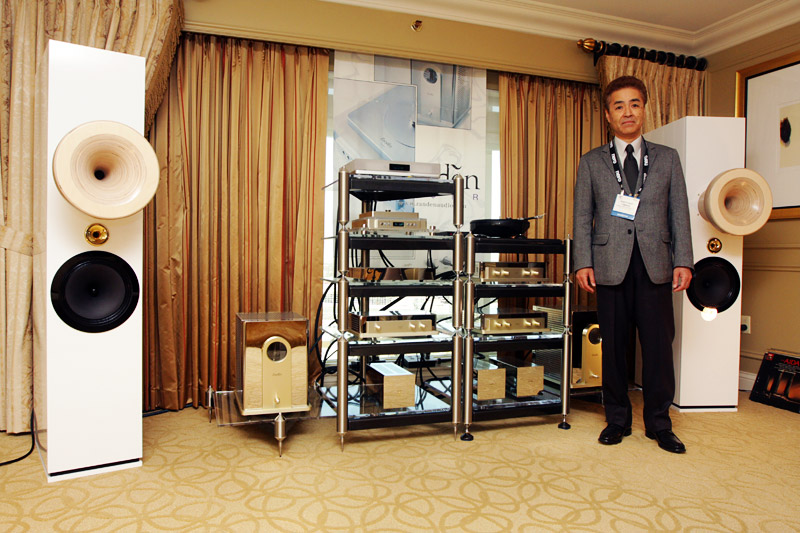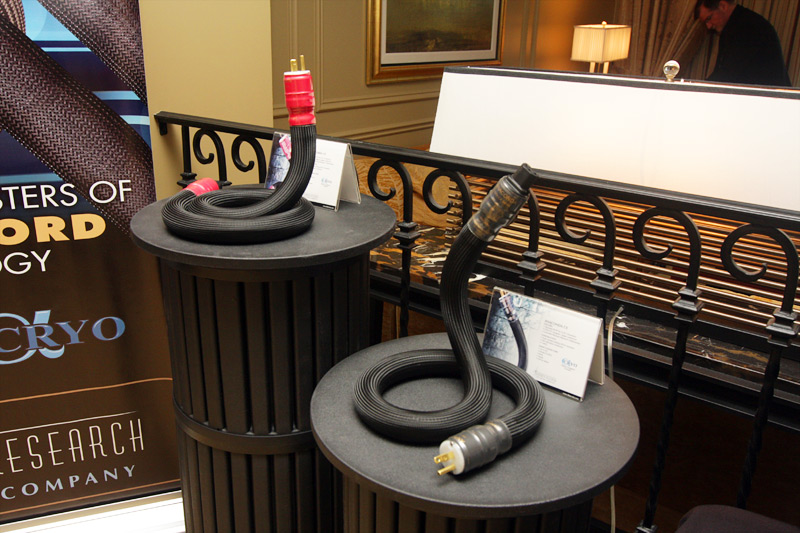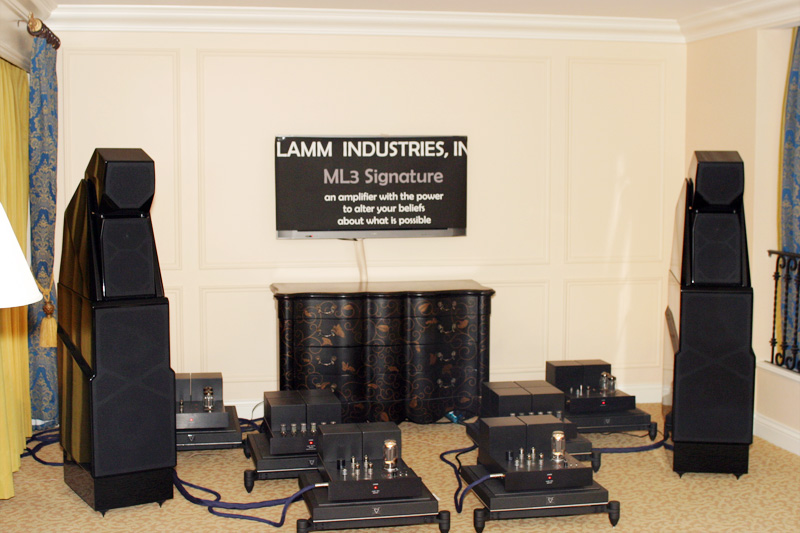 January 19, 2009
Post-CES Report
I've been back from CES for a week and doing two
things that inevitably follow the annual pilgrimage to Las Vegas: trying to kick a wicked
respiratory ailment that has plugged up my nose, chest and ears, and wading through the
profusion of online show coverage. Covering the CES as we do it at the SoundStage! Network
has made me jealous of the manner in which others in the press carry it off. Their reports
show the time necessary for taking in the show, for camaraderie, for experiencing rather
than just reporting. We've made it much harder on ourselves, determined to not only cover
the show's breadth but do so with ample depth -- and post it all as quickly as we can. I
literally spent more time during the CES in front of my computer than I did walking the
halls of the Venetian and the other venues. By Sunday afternoon, as the show was closing
down, I was ready to close down as well.
One byproduct of such a hectic pace is that any
not every product and system worthy of coverage gets mentioned in our show report. So
consider this article an editor's make-up call -- a second chance to expound on worthwhile
bits of the show that we unfortunately haven't told you about already.
In this spirit, it seems appropriate to begin
with my greatest regret from CES 2009. I walked by the Zanden Audio room a couple of
times, and I even promised Eric Pheils, the good-natured US distributor of Zanden
products, that I'd stop back to listen. And I meant it -- I looked forward to hearing
top-shelf Zanden tube products, including the Model
9600 mono amps that I just reviewed, driving Cessaro horn-loaded speakers. This
combination was memorable from last year's CES, and I'm still kicking myself for not
getting to listen this year.

Kazutoshi Yamada, who designs all Zanden Audio
products, poses with a rack of his electronics and Cessaro speakers.
The most disappointing demo was the one that
featured the new Magico M5, which was both a ShowStopper
in our coverage and part of a Standout Demo. Oh, the sound wasn't disappointing at all. The big M5s
were fast into and out of each note, sounding detailed from the highest treble to the
lowest bass. What was disappointing was Magico's use of a one-of-a-kind music server and
no CD player or other device that would allow the playback of outside music -- like the
CD-R I made expressly for CES. Thus, I couldn't quite tell how good this system was
because I couldn't hear my music on it. I heard one cut from the music server that was
from a CD I knew, but it wasn't enough to make a definitive assessment, at least for me.
The most coveted upgraded products I came across
were from Shunyata Research. We covered the Hydra
V-Ray Version II ($4995) in our show report, but the new CX line of power cords caught
and held my attention because a discontinued cord has been reintroduced. Shunyata removed
the King Cobra from its line a number of years ago, but the new King Cobra CX ($3495)
features 600 separate cryogenically treated conductors in Shunyata's dual-counter-rotating
Helix geometry. There are also Anaconda CX ($1995), Python CX ($1095), Viper CX ($695) and
Sidewinder CX ($495) cords, which differ in the number of conductors but all use the Helix
geometry and cryogenic treatment.

Two of Shunyata Research's new CX power cords.
The most fascinating product I came across was
the Soundsmith Strain Gauge Mk II phono-cartridge system. Why "system"? Because
the cartridge comes with one of seven different Soundsmith phono preamps (which can
include line-stage functionality) and has user-replaceable styli with different profiles.
What makes the Strain Gauge "fascinating" is that it operates on a unique
principle. Instead of a motor system that uses moving mass to generate voltage, the Strain
Gauge has two silicon beams that sense the cantilever's position in the groove. Soundsmith
claims that this leads to "intimate contact with the record groove's walls." The
preamp has just one gain stage, and the higher-cost models include indicators that help in
optimizing the cartridge's performance. The price varies -- from $7500 to $15,000 --
depending on the preamp you choose and its features.
Finally, I come to the best sound I heard at the
CES, THE Show or anywhere in Las Vegas, and my pick will probably come as no surprise to
those who read my reviews and know the equipment I admire -- and use. After he arrived in
Las Vegas, Vladimir Lamm found out that he was bumped from the demo room he booked months
before. But that didn't deter him, or the gang from Wilson Audio, who set up a pair of
MAXX Series 3 speakers in the new room, which had a completely different layout. A
smallish alcove was the only suitable space for the speakers and Lamm ML3 Signature amps.
Other products in use were a Lamm L2 preamp and LP2 Deluxe phono stage, a NeoDio NR Two CD
transport and NR Two digital-to-analog converter, and a Clearaudio Innovation turntable
with the company's Universal tonearm and Titanium cartridge. Cables were from
Kubala-Sosna's Emotion line, with Critical Mass equipment racks and platforms providing
support for the electronics.

Best of Show: Lamm ML3 Signature amps and Wilson Audio
MAXX 3 speakers.
This system had it all, although you had to get
the sound of so many other systems out of your ears to appreciate it fully. There was the
acute resolution for which Wilson Audio speakers are known, along with tonal purity,
low-end drive, and a vivid presence throughout the midrange and into the bass. While other
systems reproduced, this one engaged and enthralled. I played a number of cuts from my
CD-R here. I would have liked to listen to the entire disc.
I have the same speakers and amplifiers in my
listening room right now, though they'll do me no good until I get some antibiotics to
clear up my hearing. Here's an early wish for a sickness-free -- and less frenzied -- CES
2010.
...Marc Mickelson
marc@soundstage.com
|

